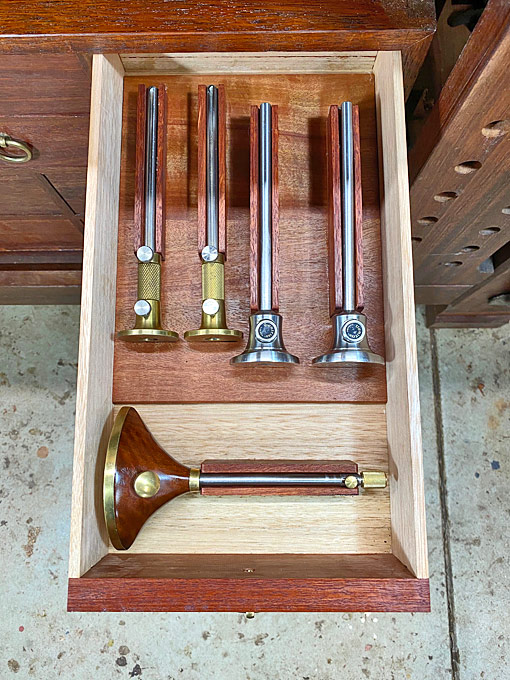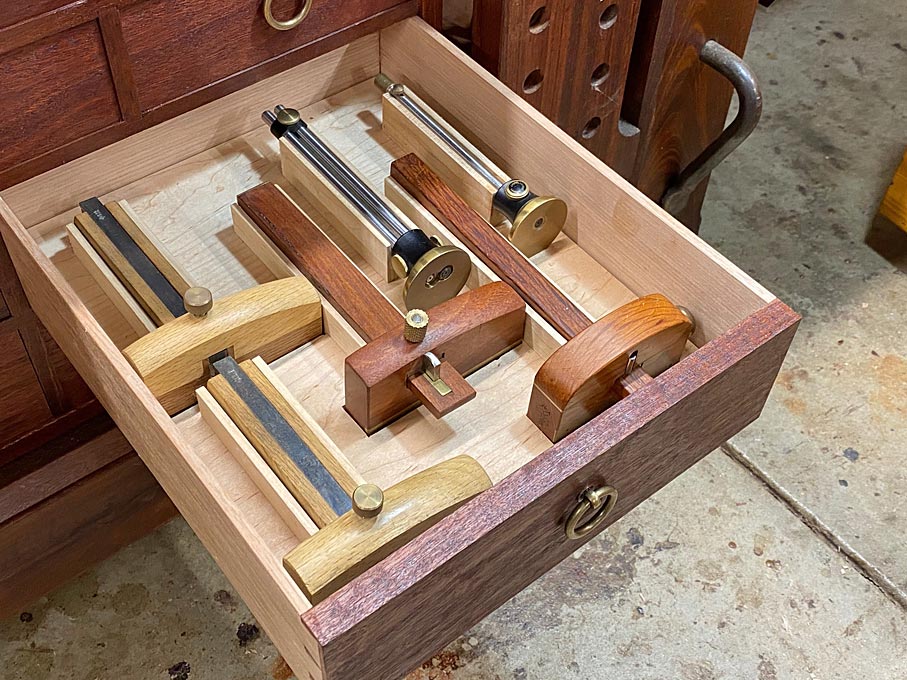Different strokes for different folks.
The wide variety of wodwork done calls for a wide variety of setting out methods, so one person's setting out tools may be useless to someone else. I do very little curved work, most of my marking is done along straight sided pieces so a plain old pin gauge with a largish stock for good registration is my typical choice. A very sharp knife (or wheel) leaves a very fine line, which particularly on dark-coloured woods is a big challenge to my ageing eyes, and I prefer a pin gauge, for most marking along the grain, A sharpish point is easy to control but leaves a slightly more prominent mark.
When marking dark, hard woods cut lines can be very difficult to see, even for younger, keener eyes A useful trick we were taught in school is to wipe a pinch of french chalk across the surface after marking. On coarse-grained woods it may not improve matters much (too much chalk gets trapped in the pores & the line isn't as sharp & contrasty), but with fine-grained woods, it can be a great help. These lines were very hard to see from a working distance before they got the chalk treatment:

I use a knife or a knife gauge for cross-grain marking, but I also use my cutting gauges for scoring deep lines such as for hinge mortises or scoring shoulders for pared grounds etc., so I want my knives to
cut, which led me to suggest I'd rather have the wheel fixed on a wheel gauge. However, I can see the point that if it turns freely, it will leave a very fine line with no tendency to tear fibres, but if I couldn't
see the line, there wouldn't
be much point!

If I did a lot of curved work, I think I'd be making tools specifically tailored to suit the job(s). There have been a few attempts to make "universal" gauges for curves, and they
are still available. The one linked to is for outside curves, but there were several attempts to make gauges that could do both inside & outside curves, like the Blaisdell gauge shown
here (scroll down the page a bit). In my mind's eye I can picture something I've seen, somewhere, with spring steel or brass 'scrolls' that could be adjusted to form a stock for inside or outside curves. I've never even held a gauge like this in my hand, let alone used it, but the one I'm picturing in my mind was a pretty cumbersome affair that would certainly not excite a guitar maker, I suspect.
I often mark curved bits (e.g. chair backs) by "finger-gauging" with a pencil, using my middle finger as the 'stock', which works well enough for my purposes (provided the opiece is relatively splinter-free!), but isn't much use if you want a scored line to prevent tear-out from a scratch-stock or whatever. I guess that's why purfling cutters were invented.....
Cheers,
Ian







































